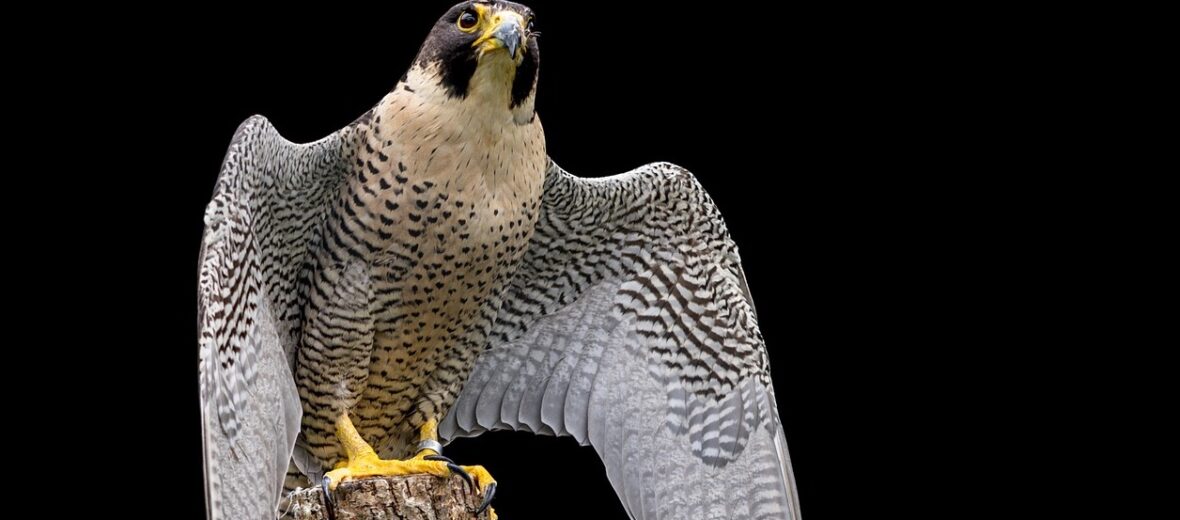
The peregrine falcon, aka the peregrine or the duck hawk, is a widespread bird of prey. Their name comes from the Latin word peregrinus, which means “to wander.” This bird is one of the most widely distributed species in the world. It is found on every continent except Antarctica. This bird is the fastest avian on the planet, by a landslide! Fortunately, these avian speedsters are listed as Least Concern by the IUCN.
First the Stats…
Scientific name: Falco peregrinus
Weight: Up to 3.3 lbs.
Length: Up to 23 inches
Wingspan: Up to 3.3 feet
Lifespan: Up to 13 years
Now on to the Facts!
1.) Peregrine falcons eat other birds like songbirds and ducks. They will also eat bats. They are able to catch their prey in mid-air and can spot prey over a mile away!
2.) They prefer wide-open areas, and they tend live near coasts where shorebirds are common, but they can be also found everywhere from tundra environments to deserts.
3.) These birds have rebounded immensely since the use of DDT and other lethal chemical pesticides were stopped. Captive breeding programs have also helped to increase the bird’s numbers worldwide.
4.) Peregrines are a favored raptor by falconers and have been used for that activity for 100s of years.
5.) They are monogamous (mate for life). They also breed in the same territory each year.
But wait, there’s more on the peregrine falcon!
6.) Breeding season lasts from late March through May.
7.) The average clutch size is 3 – 4 eggs. Gestation lasts from 29 – 32 days.
Did you know…?
These speedy falcons can dive up to 240 mph! They can also fly at speeds of up to 100 mph!
8.) The chicks, called eyases, eat an massive amount of food. In 6 days they can double their weight, and at 3 weeks are 10x their size at birth!
9.) Some of these falcons will use man-made structures such as bridges and skyscrapers to nest.
10.) Their nests are merely a scrape in the dirt or an alcove under a bridge or on top of a smoke stack. They are known for being fast, not for being engineers.
11.) The fastest known creature, of all time, is the Paratarsotomus macropalpis (a mite). These critters can move at speeds of up to 322 body lengths per second! That is the equivalent of a human running 1,300 mph!
Now a Short Peregrine Falcon Video!
Also, check out the Critter Science YouTube channel. Videos added frequently!
Want to suggest a critter for me to write about? Let me know here.




Leave a Reply